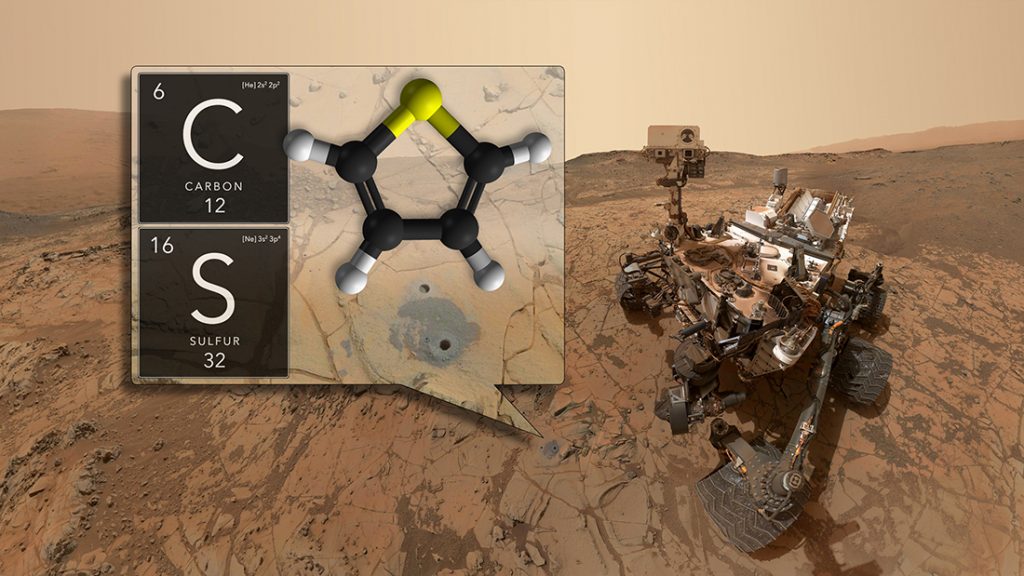Mark Salvatore has been studying Mars’ surface for years, including through his work with the Curiosity rover. He talked to NAU News about NASA’s announcement Thursday that showed evidence of organic material and methane on Mars—both of which could be indicative of life on the Red Planet.
Salvatore is an assistant professor in the Department of Physics and Astronomy at Northern Arizona University. His research focuses on the formation and evolution of planetary surfaces using a field, lab and remote sensing techniques. Much of his field research takes place in Antarctica, which is similarly cold and dry. Salvatore also has a grant from NASA to support his work in NAU’s Mars Science Laboratory Curiosity Rover, which allows him to collaborate with scientists, engineers and NASA’s rover operators to guide the Curiosity around Mars.
How did the rover find this data?
The organic molecules were discovered using the Sample Analysis at Mars (SAM) instrument, which is a complex wet chemistry laboratory onboard the rover that ingests fine-grained powders generated during drilling, heats them up to several hundreds of degrees Celsius, then measures the release of different molecules at these high temperatures. Different molecules will volatilize at different temperatures, which is how we can be confident that organic molecules are the source of these specific signatures.
What does it add to what we know about Mars and the universe generally?
Organic molecules are the building blocks for life as we know it. The fact that we have been able to identify many different types of organic molecules, within several different geologic units, and relatively close to the surface (not too far from the destructive radiation environment that the surface is exposed to), suggests that organic molecules are probably a common chemical constituent on Mars. While this obviously doesn’t mean that these molecules formed through biological processes (organic molecules are able to form through non-biological processes as well), this discovery confirms the fact that Mars was once a habitable place, and expands our knowledge of what sorts of molecules are present and what we should look for in the future.
What does it tell us about the possibility of life on Mars?
It suggests that the chemical conditions necessary for life to survive were likely present on Mars in the past. Organic molecules break down relatively easy in harsh environmental conditions, so the fact that they are preserved in these sedimentary rocks suggests that their formation (and any subsequent geologic modification) was under conditions that were, by all terrestrial accounts, habitable. Should life exist on Mars today, there is good reason to believe it wouldn’t be anywhere near the surface because of the cold and dry conditions, as well as the harsh radiation environment. Instead, if life were to exist on Mars today, it likely took shelter deep in the subsurface or in some other equally protected environment.
Will this change what you’re looking for with Curiosity or how you’re looking for it?
These are the sorts of discoveries that the SAM instrument was designed to make, so I’m very happy the rover has remained healthy and productive and provided the time, samples and data necessary to make this discovery! We’re definitely moving in the right direction when it comes to furthering our understanding of the ancient conditions that were present on Mars. We’ve also finally been able to collect drill samples and measure them onboard the rover again, so I’d say that we’re all just excited to get back “on the road” and make more measurements to see if we can continue our record of discovering cooler and cooler things!



